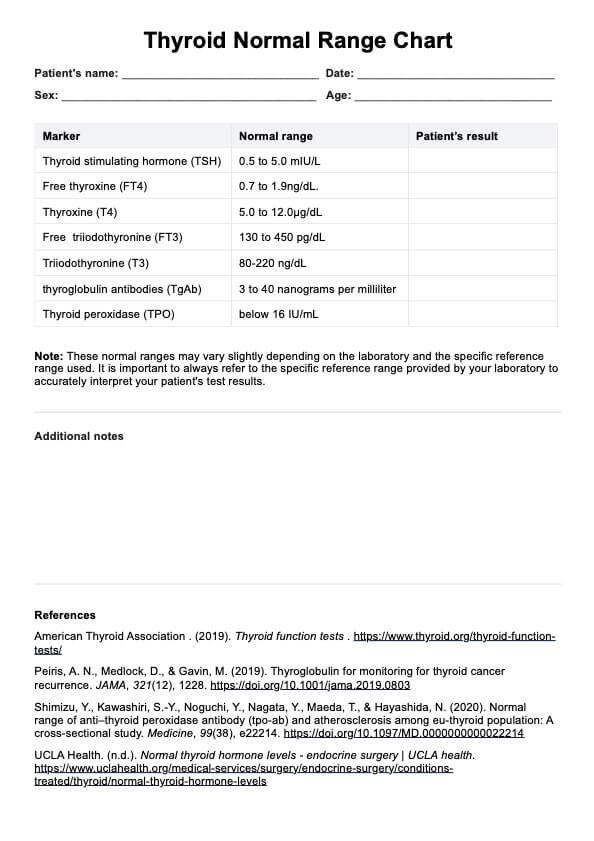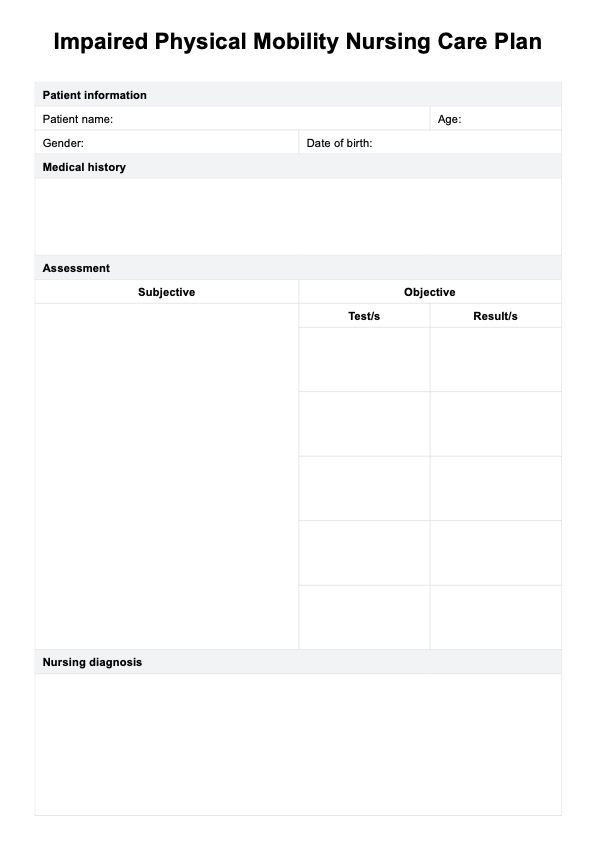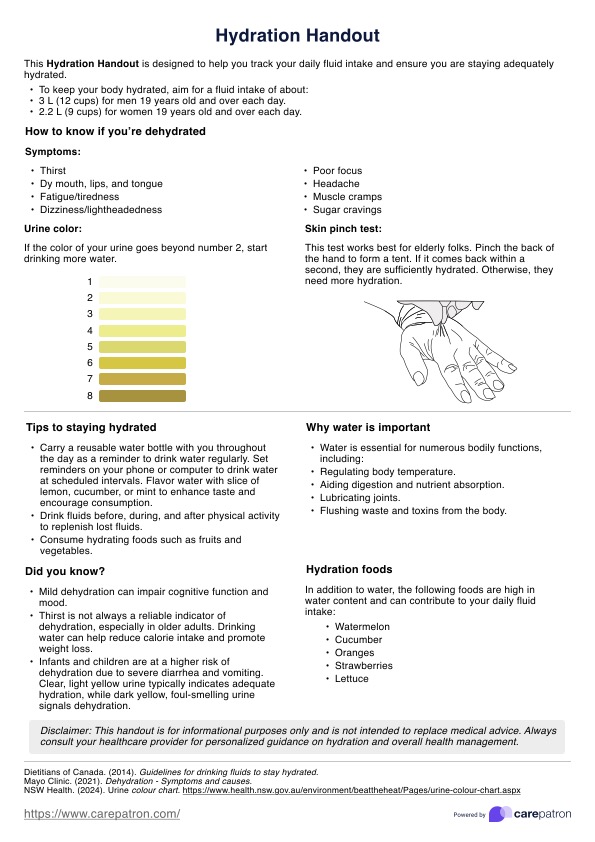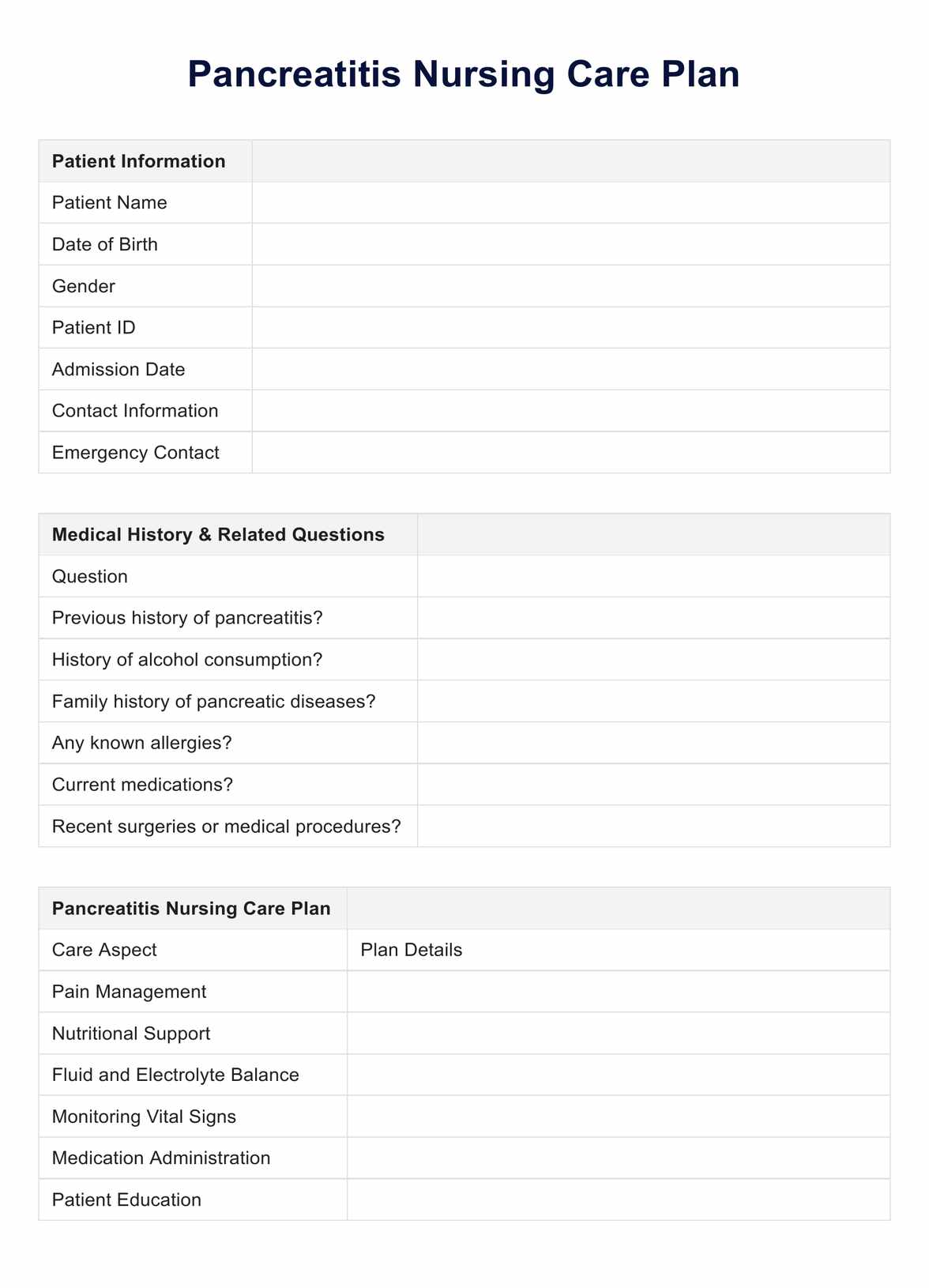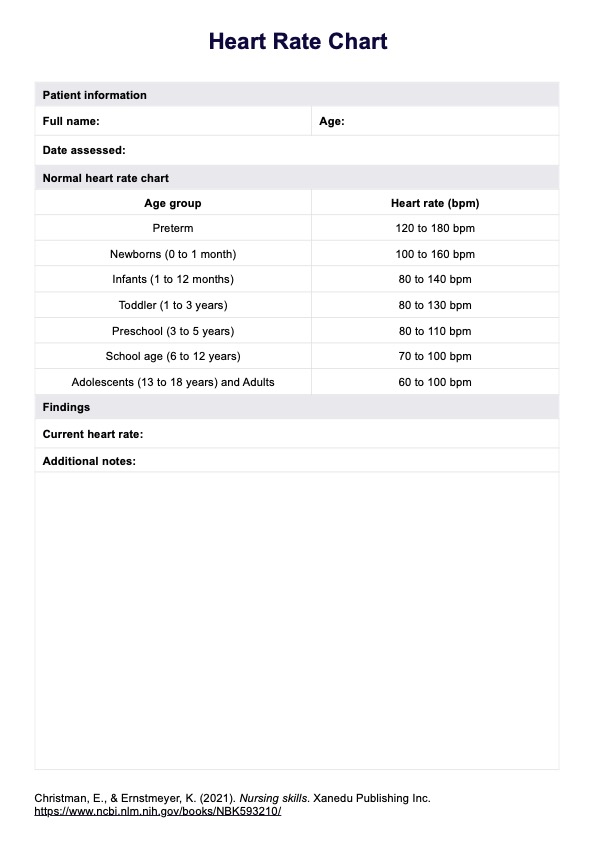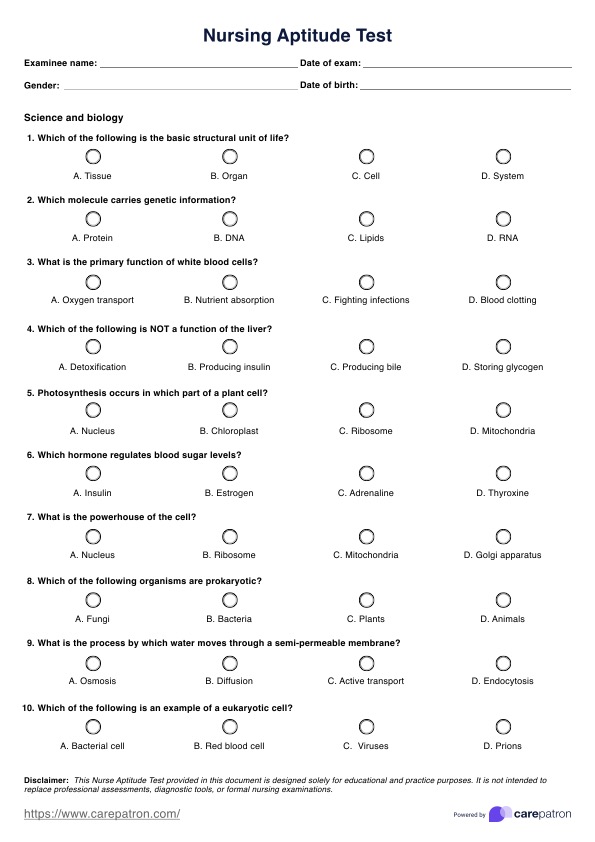Daily Symptom Survey
Monitor and track patient health with a Daily Symptom Survey, a valuable tool for assessing symptoms and improving clinical outcomes in your practice.


What Is A Daily Symptom Survey?
A Daily Symptom Survey is a simple yet effective tool designed to monitor and track a patient's health status and symptoms daily. Using a Daily Symptom Survey, healthcare professionals can gain valuable insights into a patient's condition, identify patterns or changes in their symptoms, and make informed decisions about their treatment plan. This resource is beneficial for managing chronic illnesses, assessing the effectiveness of interventions, and monitoring potential side effects or complications.
The typically includes:
- Questions about a patient's general well-being.
- The presence or absence of specific symptoms.
- The severity of any experienced symptoms.
It may also ask patients to rate their pain, fatigue, or other subjective feelings on a scale to provide a quantifiable measure of their health status. By completing the survey daily, patients can help their healthcare provider understand how their condition evolves, allowing for more targeted and effective care.
Daily Symptom Survey Template
Daily Symptom Survey Example
How To Use This Daily Symptom Survey Questions
When monitoring patient health and improving clinical outcomes, a Daily Symptom Survey can be a valuable tool for healthcare professionals. However, it is essential to understand how to use this resource effectively to maximize its benefits. This section will explore the steps involved in using the Daily Symptom Survey questions, providing healthcare professionals with the knowledge and skills to successfully integrate this tool into their practice.
Step 1: Customize the Survey
Before distributing the Daily Symptom Survey, customize the template to suit your practice's specific needs. You can add, remove, or modify questions to align with the conditions or symptoms you monitor.
Step 2: Provide Instructions for Patients
When introducing the Daily Symptom Survey to patients, ensure they understand the purpose and importance of completing it daily. Provide clear instructions on filling out the survey, emphasizing the need for accuracy and honesty in their responses.
Step 3: Distribute the Survey
Distribute the Daily Symptom Survey to patients using your preferred method. This could be through a paper copy, email, or a secure patient portal. If using an electronic format, consider using a platform like Carepatron to streamline the process and automate patient reminders to complete the survey.
Step 4: Monitor Patient Responses
Regularly review patients' responses to the Daily Symptom Survey, looking for trends, changes, or inconsistencies in their reported symptoms. Use this information to inform treatment decisions and address emerging issues or concerns.
Step 5: Discuss Survey Results with Patients
During patient appointments, discuss their survey results, addressing any questions or concerns they may have. This ongoing conversation helps build rapport and trust, encouraging patients to continue engaging with the survey and providing accurate information.
Step 6: Adjust Treatment Plans as Needed
Based on the information gathered from the Daily Symptom Survey, adjust treatment plans to address patients' needs better and improve their health outcomes. This may involve modifying medications, incorporating new therapies, or focusing on specific areas of concern.
By following these steps, healthcare professionals can use the Daily Symptom Survey to monitor patient health, make informed decisions, and optimize treatment plans. By reviewing a Daily Symptom Survey example or Daily Symptom Survey sample, practitioners can better understand how to utilize this valuable tool in their practice.
When Would You Typically Use A Survey For Daily Symptoms?
A Daily Symptom Survey can be a valuable tool for monitoring and tracking patients' health status. Here are some situations when a healthcare professional may consider using a Daily Symptom Survey:
- Chronic Conditions: Patients with chronic conditions, such as diabetes, heart disease, or cancer, may benefit from completing a Daily Symptom Survey to monitor their symptoms and identify any changes requiring intervention.
- Acute Illness or Injury: Patients recovering from a critical illness or injury may need closer monitoring to ensure they are healing correctly and not experiencing any complications. A Daily Symptom Survey can help healthcare professionals identify potential issues and adjust the treatment plan.
- Mental Health Concerns: Patients with mental health concerns, such as anxiety or depression, may benefit from completing a Daily Symptom Survey to track their symptoms and provide insights into their emotional and psychological well-being.
- Post-operative Care: Patients recently undergoing surgery may need closer monitoring to ensure they are healing correctly and not experiencing complications. A Daily Symptom Survey can help healthcare professionals identify potential issues and adjust the treatment plan.
- Telemedicine or Remote Care: For patients receiving telemedicine or remote care, a Daily Symptom Survey can provide healthcare professionals with valuable information to monitor their health status and adjust the treatment plan as needed.
A Daily Symptom Survey can be a valuable tool for healthcare professionals to monitor patients' symptoms and improve clinical outcomes. Healthcare professionals can provide targeted care and adjust treatment plans to optimize their patients' health and well-being using a Daily Symptom Survey in the abovementioned situations.
Who Can Use this Printable Daily Symptom Survey?
A Daily Symptom Survey can be a valuable tool for healthcare professionals who want to monitor and track their patients' health status. Here are some professionals who may consider using this tool:
- Primary Care Physicians: Primary care physicians can use a Daily Symptom Survey to monitor patients' health status, track symptom changes, and adjust treatment plans.
- Nurse Practitioners and Physician Assistants: Nurse practitioners and physician assistants can use a Daily Symptom Survey to monitor patients' health status, track changes in symptoms over time, and provide insights into their overall well-being.
- Specialists: Specialists, such as cardiologists, oncologists, or psychiatrists, can use a Daily Symptom Survey to monitor patients' symptoms related to their specific condition or specialty and adjust treatment plans as needed.
- Physical and Occupational Therapists: Physical and occupational therapists can use a Daily Symptom Survey to monitor patients' symptoms related to their rehabilitation progress, identify any complications or setbacks, and adjust treatment plans as needed.
- Remote Healthcare Professionals: Healthcare professionals, such as telemedicine providers or digital health coaches, can use a Daily Symptom Survey to monitor patients' health status, track symptom changes, and provide targeted care remotely.
A Daily Symptom Survey can be a valuable tool for healthcare professionals who want to monitor and track their patients' health status. This tool allows healthcare professionals to improve clinical outcomes, provide targeted care, and optimize their patients' health and well-being.
Why Is This Assessment Popular With Nurses?
The Daily Symptom Survey has become increasingly popular among nurses—thanks to its ability to provide valuable insights into patients' health status and help healthcare professionals make informed decisions about their treatment plans. Here are some reasons why this assessment is popular with nurses:
Easy to Use
The Daily Symptom Survey is easy to use, allowing nurses to quickly and efficiently collect valuable data about their patients' symptoms and health status. The survey can be completed quickly, making it ideal for busy healthcare environments.
Personalized Care
The Daily Symptom Survey gives healthcare professionals insights into their patients' health status, allowing them to tailor their care plans to address their needs better. This personalized approach can improve clinical outcomes and enhance patients' overall well-being.
Early Detection
The Daily Symptom Survey allows nurses to detect changes in patients' symptoms early, providing an opportunity for early intervention and preventing potential complications. By identifying emerging issues early, nurses can adjust treatment plans to optimize patients' health outcomes.
Remote Monitoring
The Daily Symptom Survey can be used for remote monitoring, allowing nurses to track patients' health status and provide targeted care remotely. This can be especially valuable for remote patients or with limited healthcare access.

Benefits Of Free Daily Symptom Survey Template
Cost-Effective
A free Daily Symptom Survey template can be a cost-effective way to monitor and track patients' health status, especially for healthcare providers with limited resources.
Accessible
A free Daily Symptom Survey template is accessible to healthcare providers, making it easier for them to monitor patients' health status, regardless of location.
Standardized Data Collection
Using a Daily Symptom Survey template ensures standardized data collection, making comparing and analyzing symptoms and health status easier over time. This can improve the accuracy of clinical decision-making.
Improved Patient Engagement
A Daily Symptom Survey can enhance patient engagement, allowing patients to provide more detailed information about their symptoms and health status, improving communication with their healthcare provider.
Efficient Care Delivery
A Daily Symptom Survey can improve care delivery efficiency, allowing healthcare professionals to quickly and efficiently collect patient symptoms and health status data.
Commonly asked questions
A Daily Symptom Survey can be used when monitoring patients with chronic conditions or during treatment to track progress and identify any potential changes in health status.
Creating a Daily Symptom Survey involves selecting relevant questions to assess a patient's symptoms and health status. Healthcare professionals can use existing templates or create their own based on their patient population's needs.
Daily Symptom Surveys can help healthcare professionals monitor and track their patients' health status, making informed decisions about their treatment plans, leading to improved patient outcomes. Additionally, Daily Symptom Surveys can enhance patient engagement, improve communication with healthcare providers, and provide valuable insights into the efficacy of treatment plans.


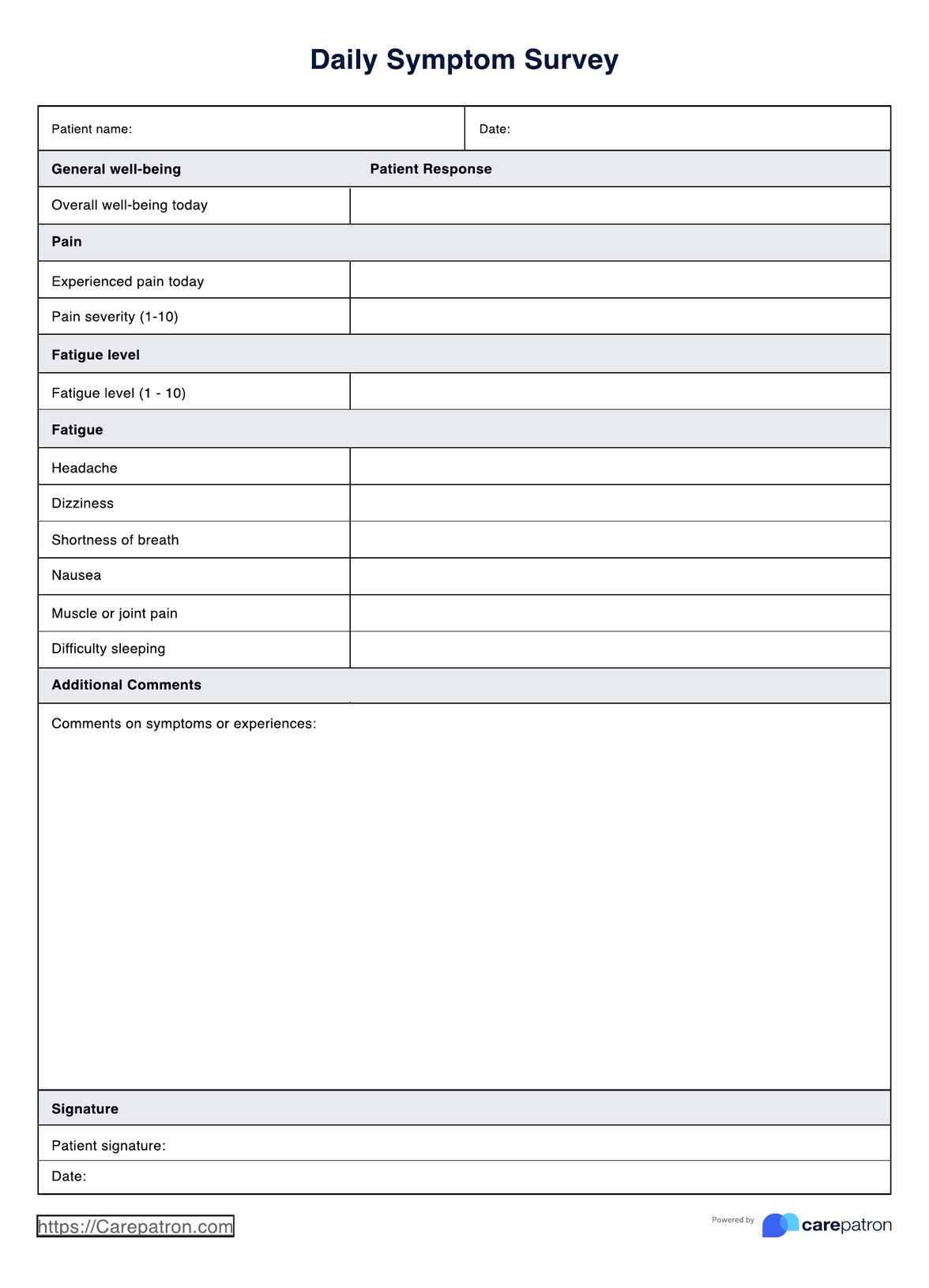
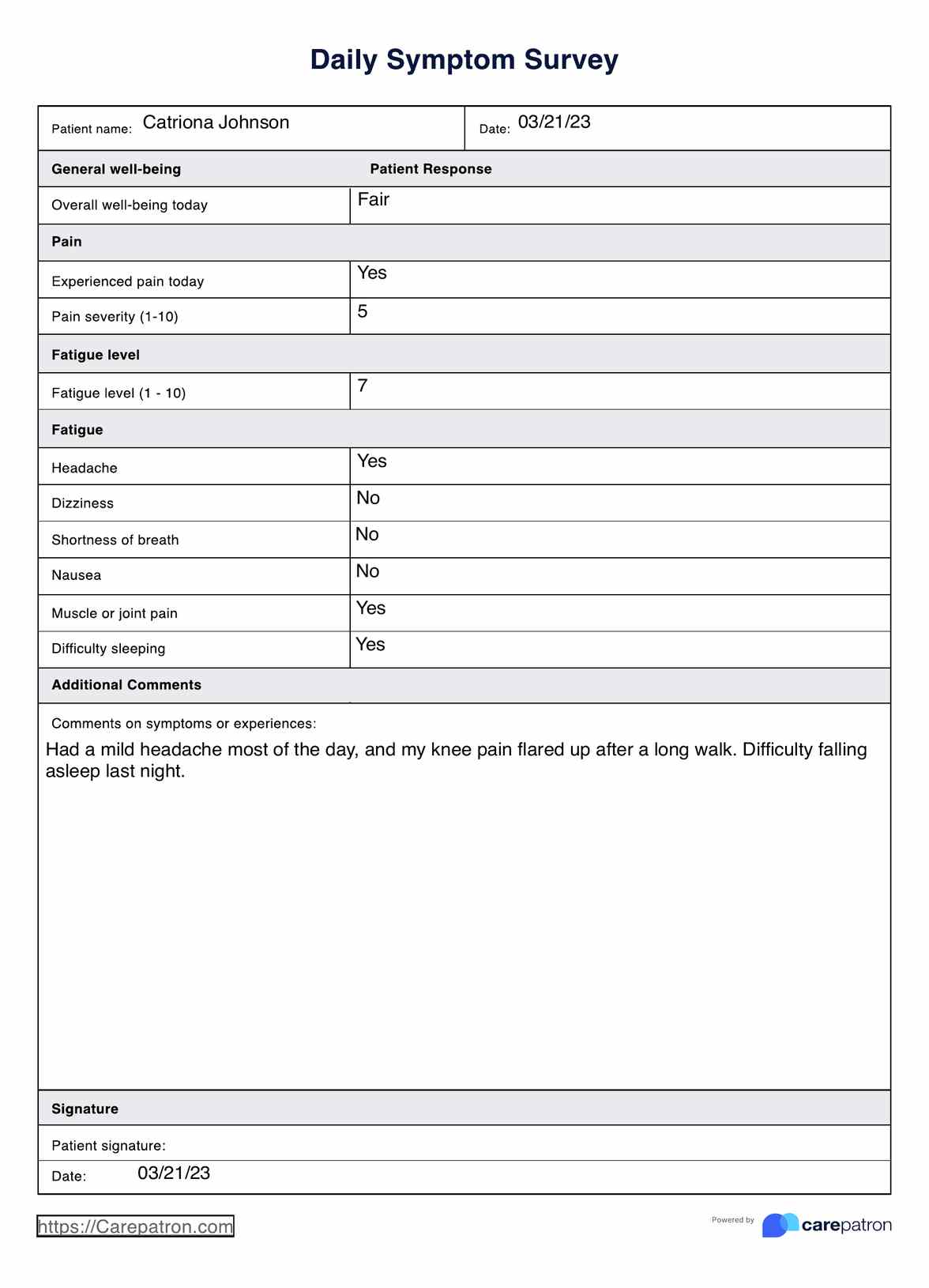

















-template.jpg)


















































































